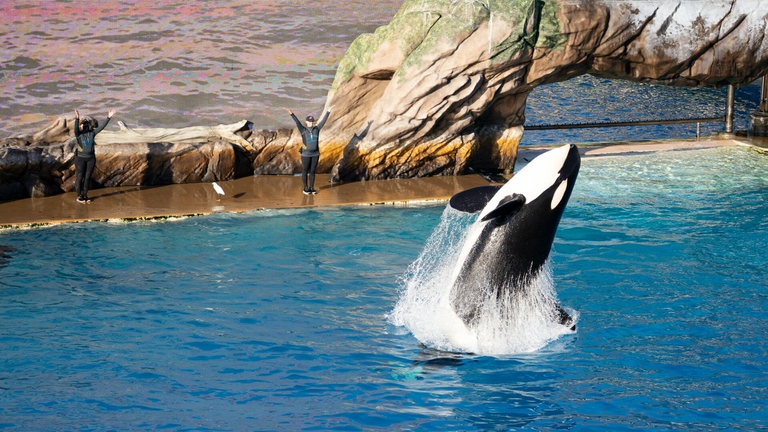https://www.lifegate.it/orca-lolita-e-tempo-di-svuotare-le-vasche
- |
- The killer whale Lolita will see freedom after fifty years of captivity
- Now the challenge will be to return an animal to the wild, the orca, by teaching it to hunt again
- There are still too many animals hostage in theme parks, it's time to free them
More than fifty years have passed since then the killer whale Lolita, a Orcinus orca, was imprisoned in the famous 1970 Penn Cove capture in Washington state.From that day on she was forced to live, and perform, inside the inadequate tank of the Miami Seaquarium.Finally, as announced on March 30th by the current owner of the aquarium Dolphin Company, along with the Florida nonprofit Friends of Lolita, the killer whale Lolita, also known as Tokitae, will no longer have to perform in amazing jumps and acrobatics but it will be able to return free to its native waters, inside a dedicated sanctuary.

How to become a free orca again
The protests by animal rights activists began as soon as Lolita made its debut at Seaquarium.Since that day, associations such as The Dolphin Project they have protested in front of the park gates to ask for his release, shouting "free Lolita”.But until today they had never been heard.Lolita's recovery plan will be very complicated and long, according to estimates it will take from 18 to 24 months.The tycoon Jim Irsay, owner of the Indianapolis Colts football team, said he will help pay for Lolita's relocation, which could cost well into the eight figures and require the use of a 747 or C-17 military plane, “everything for the well-being of the orca”.
However, in addition to the logistical difficulties, the greatest undertaking will be to make Lolita a free animal again. In fact, it is a long-term job that involves re-acclimating the animal to ocean waters, but above all it will be necessary to teach Lolita to go back to hunting, now incapable due to decades of imprisonment.For this purpose, a sanctuary with protective nets will be built in the Pacific Ocean, off the northwestern coast of the United States.
It's time to empty the tubs
How normal can it be to hold an animal more than six meters long in a tank that barely exceeds twenty. How can you leave an animal, accustomed to spending its entire existence alongside its family group, alone since 1980, after his “cell” mate Hugo dies.How could it have taken fifty years – fifty – to consider releasing Lolita.But there's more:the Seaquarium tanks are the smallest of all of North America, its exposure to the sun and bad weather violates section 3.103(3)(b) of the Animal Welfare Act e its tank is at least five meters shorter than required by the Animal Welfare Act, section 3.104.
How was all this possible?For animal rights activists and non-profit organizations fighting for animal welfare, keeping animals in captivity is a cruel practice, mainly because their detention can be simplified in two words: exploitation and abuse.Forcing these social animals into small tanks is extremely stressful and can lead to abnormal behavior, disease and premature mortality. Organizations have been fighting for animal liberation for years but the successes have always struggled to arrive.In 2013 the documentary “Blackfish” opened the eyes of many people to the living conditions of orcas in captivity and the cruelty of the marine theme park industry, in this case the SeaWorld Orlando. So much so that following the release of the documentary, protest movements began against the park which, due to the strong pressure and reduction in the flow of visitors, put an end to the captive breeding of orcas and shows with animals.
The news was also commented with cautious semi-optimism by Ric O'Barry, founder and director of The Dolphin Project, skeptical about the actual realization of the project, but who states:“This news sends a clear message to the captive industry: it's time to empty the tubs, including all tanks at 31 facilities owned by The Dolphin Company.”That this liberation yes a new starting point and that we will finally no longer see creepy animal shows? Hard to say for sure but the fight continues.
